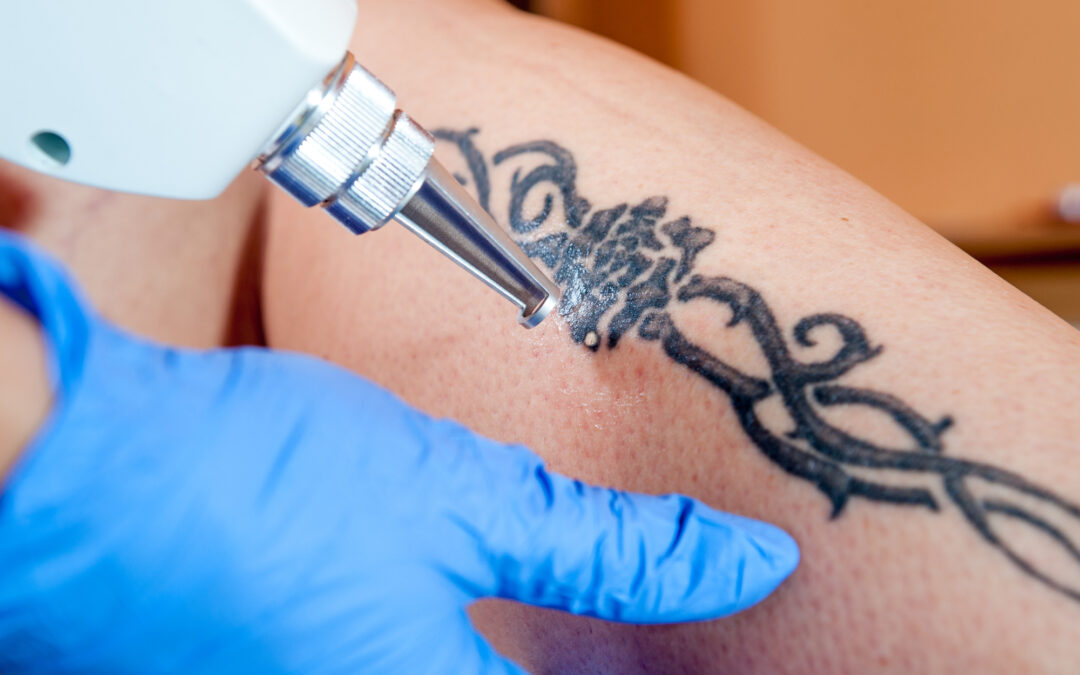Tattoos come in all shapes, sizes, and colors. With time, some patients are not as attached to their tattoo(s) and are looking for change. Some patients would like to have the tattoo completely removed while others simply want a cover-up tattoo. Either way, some degree of tattoo ink needs to be removed. The only effective way to accomplish complete tattoo removal is with lasers.
Lasers emit very short and strong laser pulses that penetrate deep into the skin, without injuring the top layers. The pigments in the ink then absorb these pulses, and as the laser light is transformed into photoacoustic waves, it mechanically breaks up the ink into smaller particles. These are then naturally absorbed by the body’s own immune system. The number of treatments depends on the size of the tattoo as well as its location, depth, and color. Amateur tattoos are the easiest to remove whereas professional ones may require more treatment sessions. The tattoo will fade slowly between treatments as the body removes the remainder of the tattoo pigment.
Tattoo lasers usually come in two types, nanosecond or picosecond. Newer tattoo lasers typically use picosecond pulses. Picosecond lasers tend to have a higher peak pulse energy, and as such usually take fewer treatments to clear the tattoo ink. Nanosecond lasers are still very effective but may take more treatments. The additive effect of using fractional ablative lasers with the tattoo lasers can often reduce the total number of treatments and help with the more stubborn colored inks.
Aftercare is very important to prevent scarring and infection. Anesthesia is usually with ice or cold air, but on occasion, a topical anesthetic will be used. Treatments are usually no more frequent than 6-8 weeks apart. Nonprofessional tattoos usually can be removed with 3 or fewer treatments. Professional tattoos can take up to 12-14 treatments.
If you would like more information about laser tattoo removal then feel free to schedule a consultation at either our Vermont or Maine clinics.

